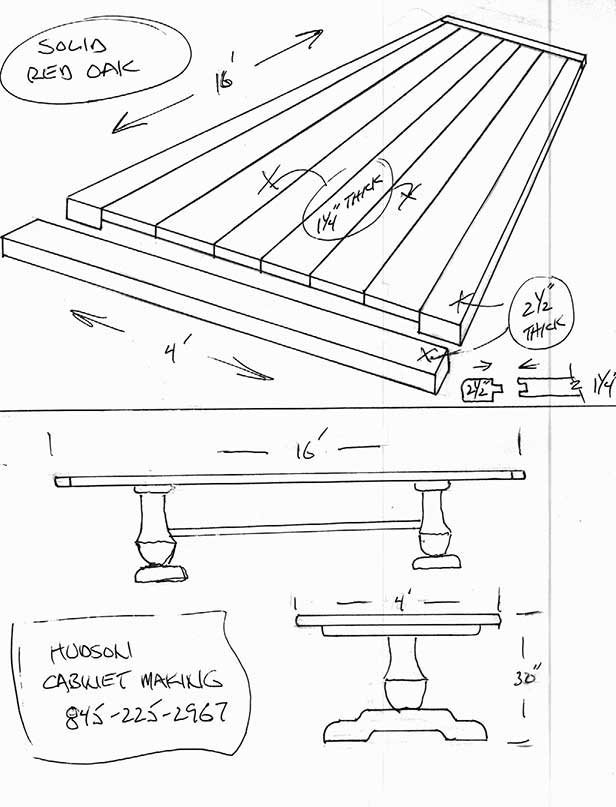
I found a company in Maine that specialized in creating very large table pedestals. I only wanted to use two (not three) pedestals in case his floor was not perfectly flat (and it looked better that way).
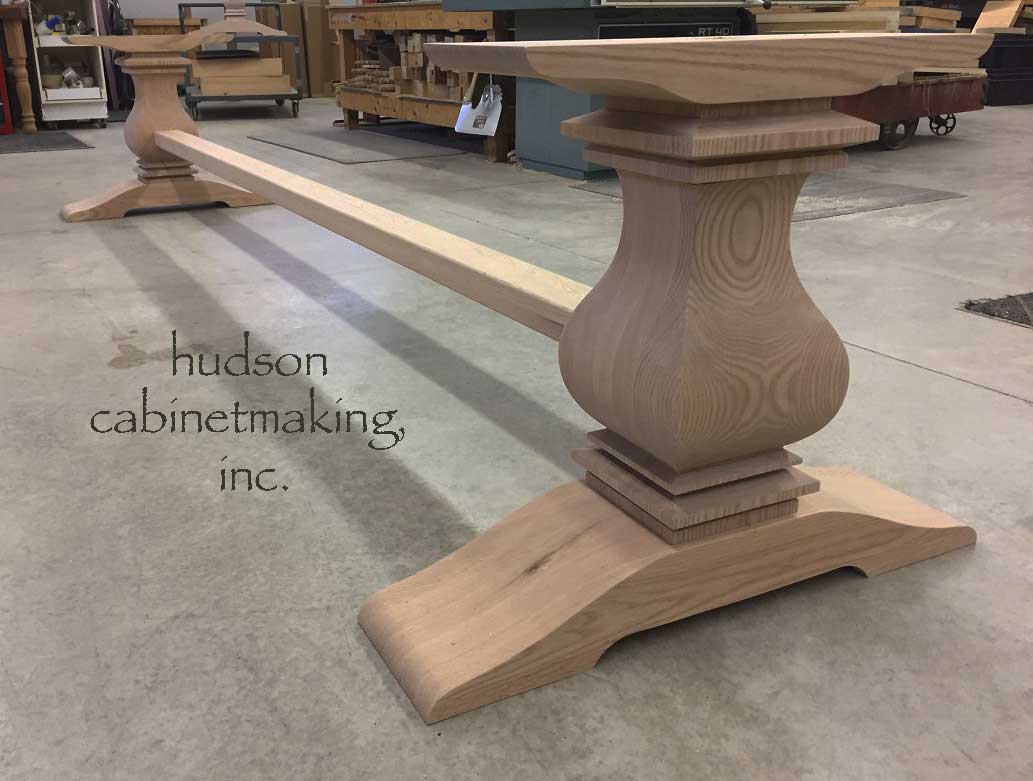
Once I had the outside edge machined to 2.25” thick and the inside to 1.25”, we aligned them all and dry clamped to see what we had.
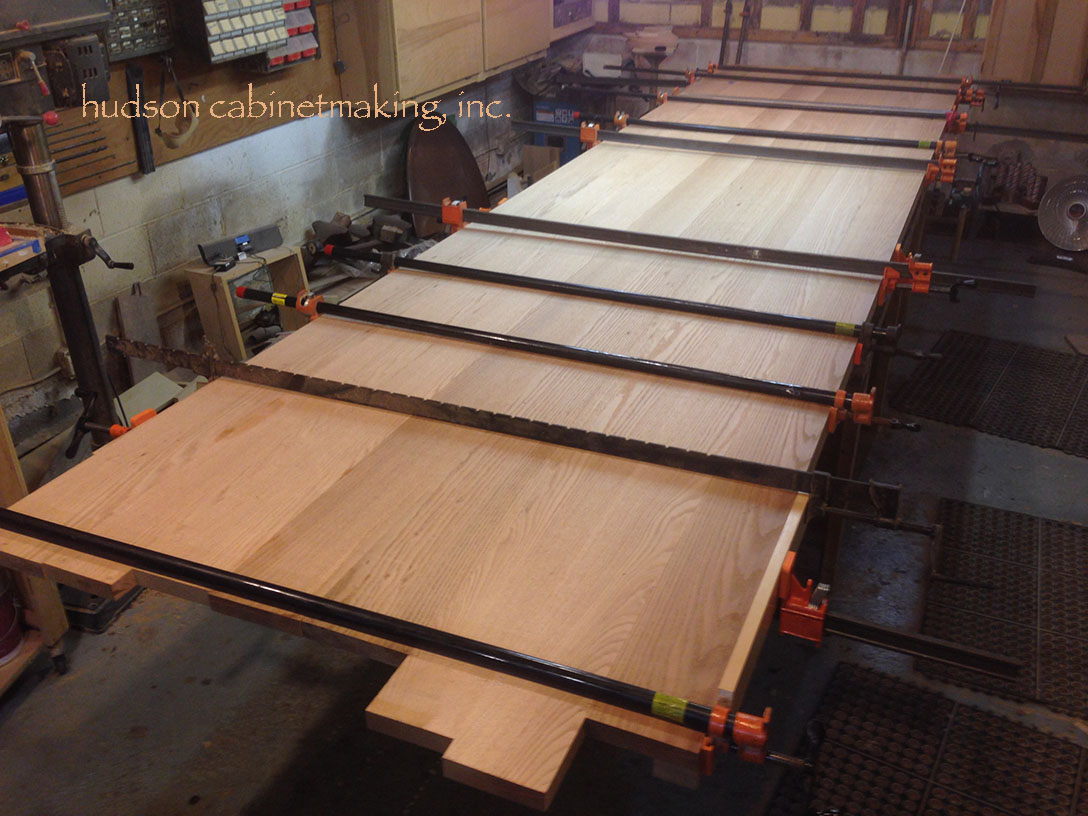
The bread board ends are boards that cap each end of the long table top. They run 90 degrees to all the other boards, hide the end grain there and help keep the surface flat. They are attached by means of a tongue (left protruding from the long boards) and a groove cut into the bread board in which the tongue will insert….. and they are kept in place by dowel pins. The two holes at the end of each tongue are elongated so that all the long, center boards can expand and contract along their width (from changes in humidity) without being held ridged by the dowel pins. You’ll notice that I made the ‘tongue and groove’ hidden by stopping it short of both ends by an inch or so.
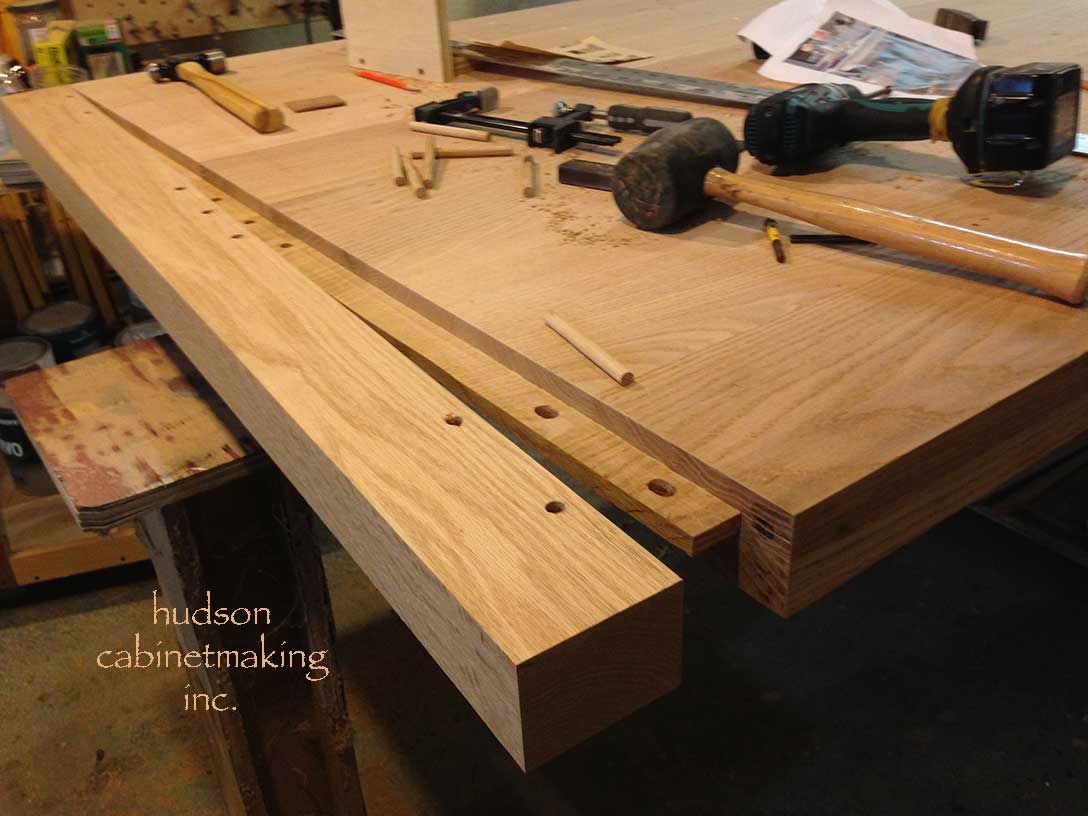
We pinned everything in place and sanded.
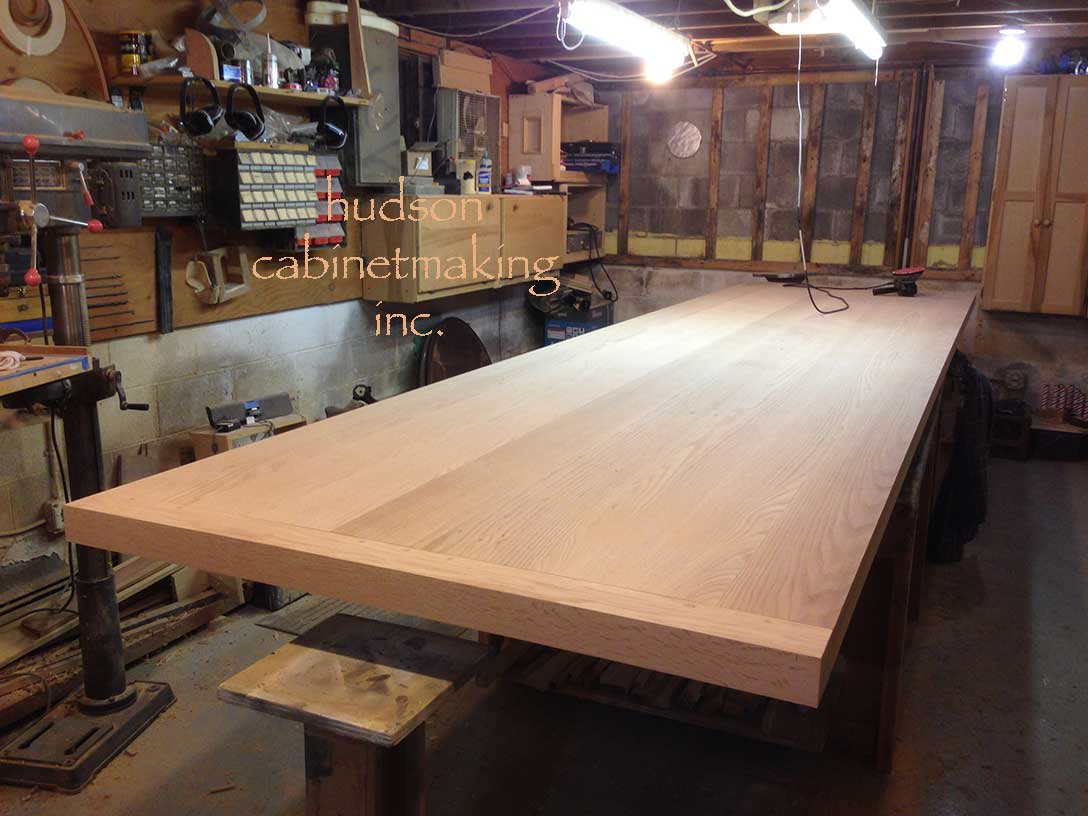
We fastened the pedestals to the table’s bottom with a bolt that is half wood thread (place in the table top’s bottom) and half machine thread (for wings nuts and washers) to go through an enlarged hole in the pedestals support spreader. We found the best positions for the legs by placing the top on the pedestals (somewhere between a quarter and a third of the way in from each end) until the top was dead straight (no sag).
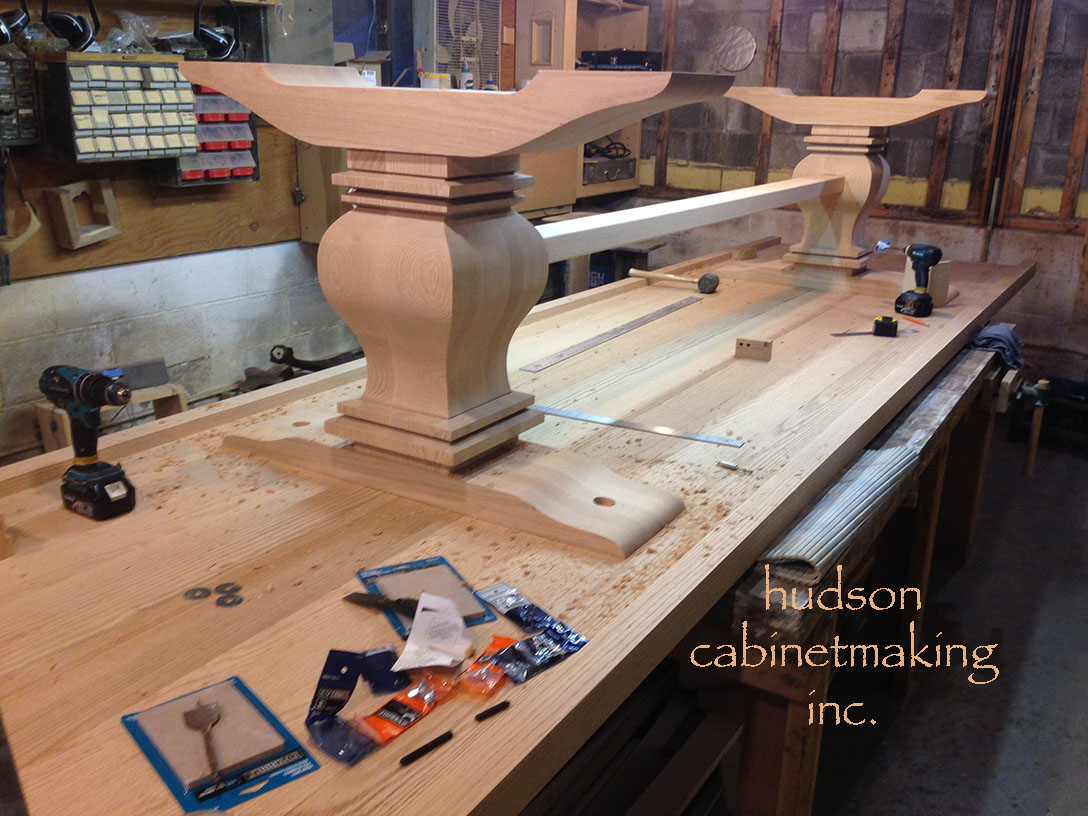
It was very hard to get a picture of the finished table in their home that showed the entire table AND what the final color looked like… so I have two shots here.The first shows the surface color & texture (finish)
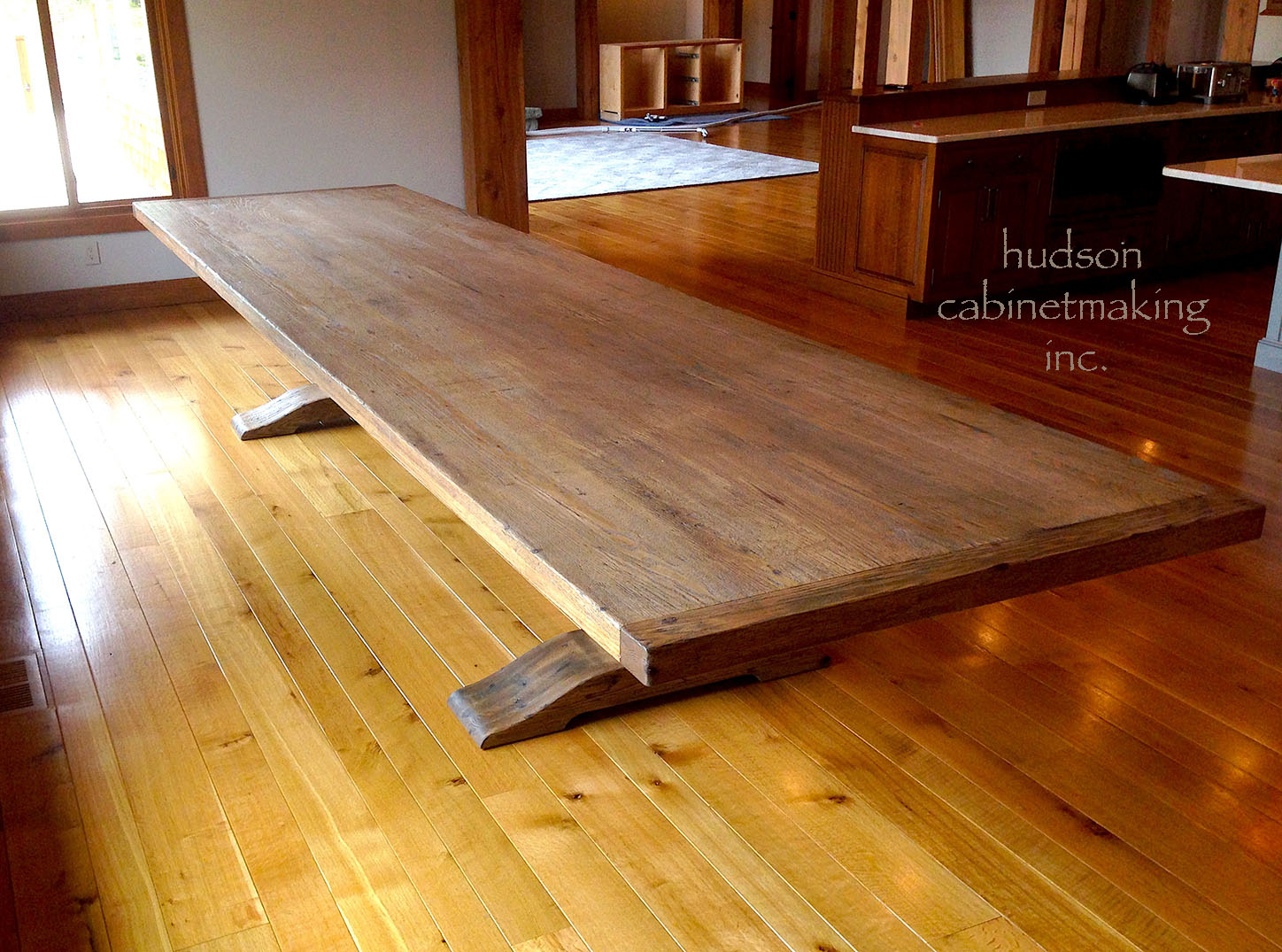
and a shot for shape and size.
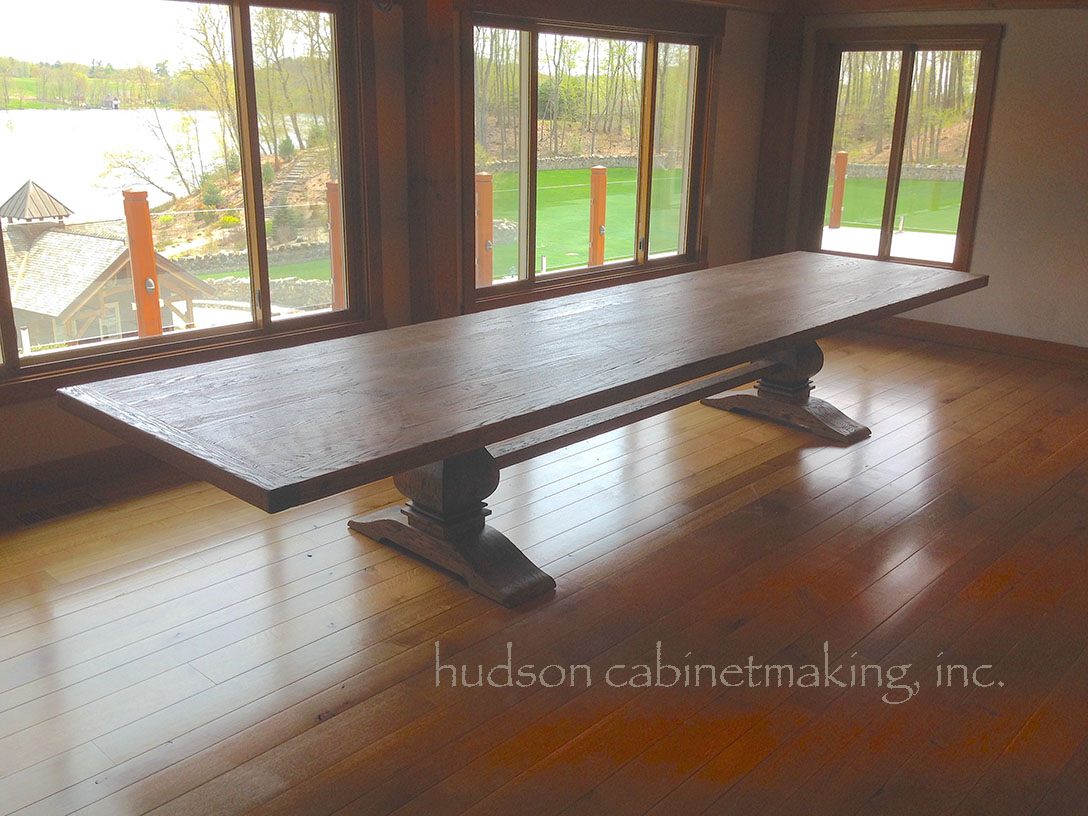
Russell HudsonHudson Cabinetmaking, Inc.